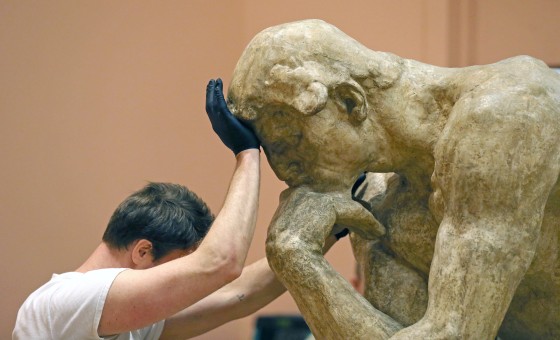The hunt for creativity has become one of the hottest pursuits of our uber-connected, uber-productive culture. But while the cult of creativity often portrays creativity as a burst of spontaneous inspiration, the reality is that rediscovering and re-contextualizing old ideas is often more valuable — and more effective — than scattershot attempts to randomly discover The Next Big Thing.
Creativity gurus and researchers, of course, would disagree. Depending on who you ask, workers can increase their creativity (and therefore a whole host of other desirable qualities) by keeping toys on our desks, listening to Baroque music, regularly hanging out with sarcastic people or doodling.
Take your pick!
But what if we're thinking about creativity all wrong? What if, instead of treating creativity as a magical end-goal, we looked for ways to deepen our mastery of topics? What if instead of lionizing creativity as a goal unto itself and creative people as society’s best and brightest, we rewarded hard workers?
In commerce, companies must always consider the features of their products and services in connection with the needs of their consumer bases. As a result, commercial creators who can sort intelligently through data, empirical information and assumptions can cull novel insights and build innovative outputs without ever experiencing a surprise “eureka moment.”
In other words, innovation is not always as sexy — or as random — as creativity gurus make it seem. As the writer and biochemist Isaac Asimov stated in a 1959 essay on the process of innovation: “What is needed is not only people with a good background in a particular field, but also people capable of making a connection between item one and item two which might not ordinarily seem connected.”
What is old can become new again when placed in a different context.
To illustrate his point, Asimov explored the methods by which Charles Darwin and Alfred Wallace advanced the science of natural selection. Each did the necessary fieldwork to evaluate the development of species in nature. Each consumed the prevailing literature, including Thomas Malthus’ 1798 masterwork “Essay on Population,” which argued that overpopulation of humans would lead to the weeding out of certain communities. And each saw an opportunity to apply Malthus’ thinking to species of animals.
But more was necessary before the true progression of thought could occur. As Asimov notes: “[W]hat you needed was someone who studied species, read Malthus, and had the ability to make a cross-connection.” This cross-connection is a vital part of the process, after which “a new idea seems reasonable.”
Essentially, Asimov argued that what is old can often become new again when placed in a different context. To that end, creation need not even be technically new.
Take Gatorade, the subject of a recent Harvard Business Review case study, which sought to bolster flagging sales in a competitive market by taking a fresh look its core demographic: athletes. After evaluating the habits of the most successful players in the field, Gatorade learned hydration was not the only reason this subset of influential consumers bought their products; athletes relied on Gatorade to help push them through tough workouts.
To better serve those needs, Gatorade developed a three-step product series that promised to “Prime,” “Refuel” and “Recover” athletes throughout their regimens. Gatorade’s innovation spurred a sharp uptick in sales, which rose from under $4.5 billion in 2009 to $5.6 billion in 2015 according to HBR.
The pivot also represented a return to Gatorade’s 1960s roots. The company was originally created as training beverage for the University of Florida’s Gator football team. The drink supplied electrolytes and carbohydrates to athletes who needed more than mere water to reach peak performance in Florida’s brutal heat.
The HBR study’s authors call this type of innovation the “Third Way,” which “focuses on innovating around the current product to make it more valuable,” rather than “incremental improvement of current products, [or] radical rethinking of the business.”
In other words, and with no disrespect to Robert Frost, Gatorade’s creativity lay in reexamining a road already traveled.
Ultimately, creativity is often characterized by a willingness, as Asimov wrote, “to fly in the face of reason, authority and common sense.” Armed with insights gleaned from careful study, creativity often flows not from the pond of the future but instead from the watershed of the past.
Eliot Gattegno isa professor at NYU Shanghai, where he is part of the Program on Creativity and Innovation. His research focuses on creativity, innovation, and entrepreneurship, and has been published in outlets ranging from Oxford University Press to Techcrunch and Quartz. He is also a critically acclaimed musician.
